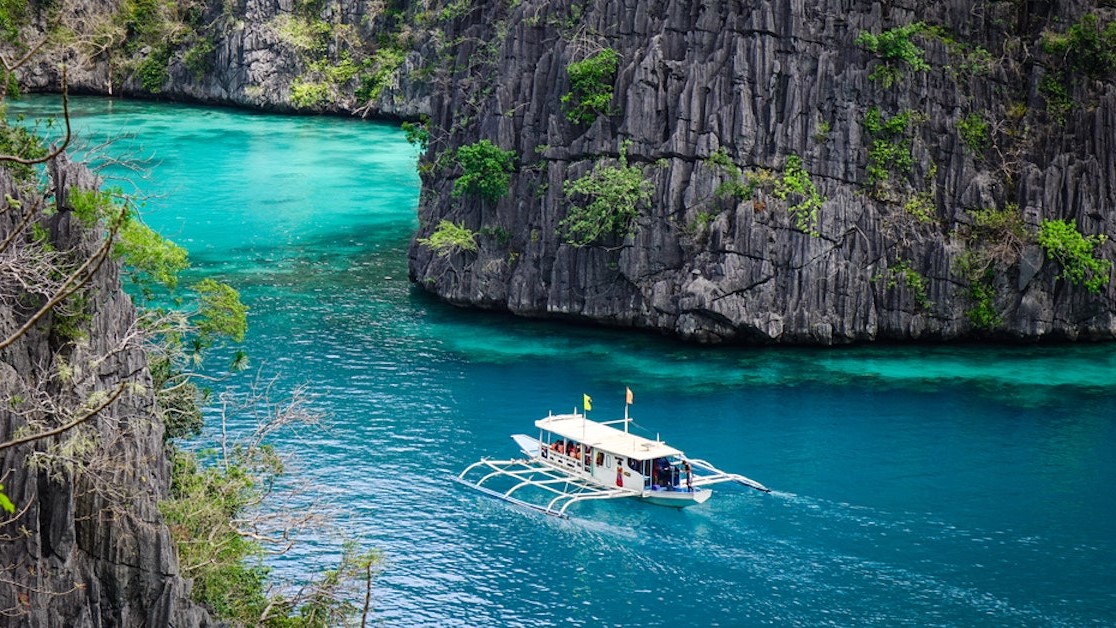Coron‘s indigenous music and dance performances offer a captivating glimpse into the rich cultural heritage of the indigenous tribes in the area.

The Tagbanua people, one of the indigenous groups in Coron, have a vibrant tradition of music and dance that reflects their connection to nature, spirituality, and community.

music and dance
Here’s a detailed description of what you might experience during Coron’s indigenous music and dance performances:
**1. Traditional Instruments:
- Description:
- Indigenous performances often feature traditional instruments crafted from locally sourced materials.
- Instruments may include drums made from hollowed tree trunks, bamboo percussion, and string instruments like the kudyapi.
**2. Tagbanua Rhythms and Melodies:
- Description:
- Tagbanua music is characterized by rhythmic beats and melodic tunes that resonate with the natural surroundings.
- Rhythms often mimic the sounds of the forest, rivers, and wildlife, creating a harmonious connection between music and nature.
**3. Instruments from Nature:
- Description:
- Some performances showcase instruments crafted from natural elements, such as coconut shells, leaves, and bamboo.
- These instruments not only produce unique sounds but also highlight the resourcefulness of the indigenous communities.
**4. Spiritual and Ritualistic Dances:
- Description:
- Indigenous dances in Coron are often tied to spiritual beliefs and rituals.
- Performers may use dance as a way to connect with the divine, seek blessings, or express gratitude for nature’s bounty.
**5. Colorful Traditional Attire:
- Description:
- Dancers and musicians often wear colorful traditional attire adorned with intricate beadwork and tribal patterns.
- The attire reflects the cultural identity of the Tagbanua people and adds a visual element to the performances.
**6. Narrative Performances:
- Description:
- Some dances tell stories or depict aspects of daily life, myths, or historical events.
- Through rhythmic movements and expressive gestures, performers convey narratives that have been passed down through generations.
**7. Community Participation:
- Description:
- Indigenous performances are often inclusive, with community members of different ages participating.
- This fosters a sense of community and ensures the transmission of cultural practices to younger generations.
**8. Healing and Ceremonial Dances:
- Description:
- Certain dances are performed for healing purposes or during ceremonies that mark significant events in the community.
- The rhythmic patterns and movements are believed to have spiritual and therapeutic qualities.
**9. Call and Response Singing:
- Description:
- Singing is an integral part of indigenous performances, with call and response patterns being common.
- This interactive style of singing creates a dynamic and engaging experience for both performers and the audience.
**10. Fire and Drum Rituals:
- Description:
- Special rituals may involve dances around a bonfire, with drumbeats providing the rhythmic foundation.
- Fire dances are not only visually captivating but also hold cultural significance for the indigenous communities.
**11. Ceremonial Offerings:
- Description:
- Some performances include ceremonial offerings to honor ancestors, nature spirits, or deities.
- These rituals are an essential part of maintaining the spiritual balance within the community.
**12. Interactive Sessions:
- Description:
- Indigenous performances in Coron may include interactive sessions where audience members are invited to participate.
- This engagement fosters a sense of connection and appreciation for the cultural traditions.
**13. Cultural Explanations:
- Description:
- Performances are often accompanied by explanations of the cultural significance of the dances and music.
- This provides context for visitors, promoting a deeper understanding and respect for the indigenous heritage.
**14. Celebratory Festivals:
- Description:
- Indigenous music and dance play a central role in celebratory festivals that mark important occasions.
- These festivals are vibrant, joyous events that showcase the cultural vitality of the Tagbanua people.
**15. Preservation Efforts:
- Description:
- Efforts are being made to preserve and promote indigenous music and dance in Coron.
- Cultural institutions, community-led initiatives, and educational programs contribute to the ongoing vitality of these traditions.
Experiencing Coron’s indigenous music and dance performances is not just a visual and auditory delight but also an opportunity to connect with the deep-rooted cultural heritage of the Tagbanua people.

As you witness the rhythmic beats, expressive movements, and vibrant colors, you’ll gain insight into the spiritual, communal, and artistic dimensions of this unique cultural expression in Coron.




